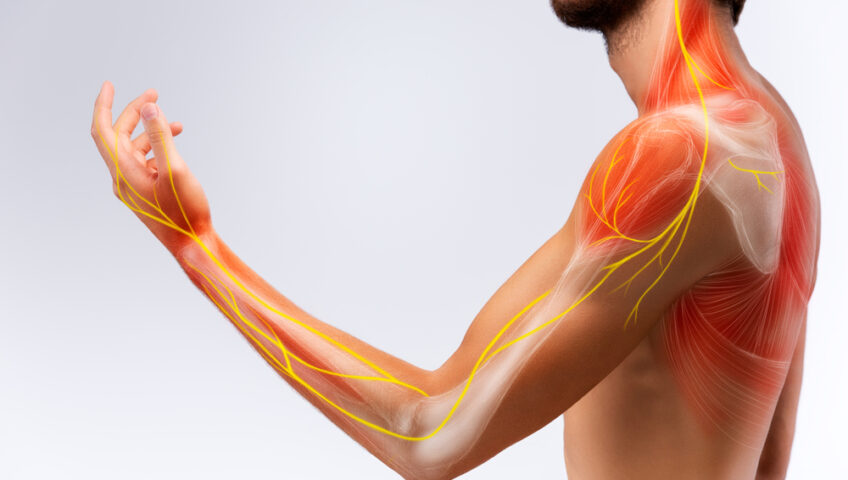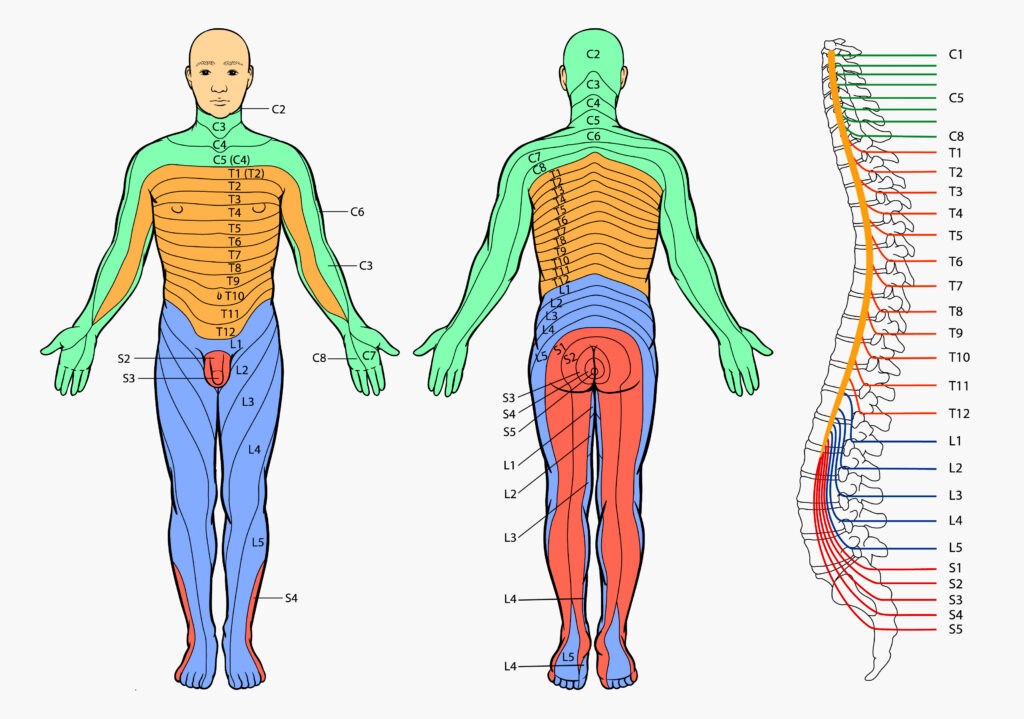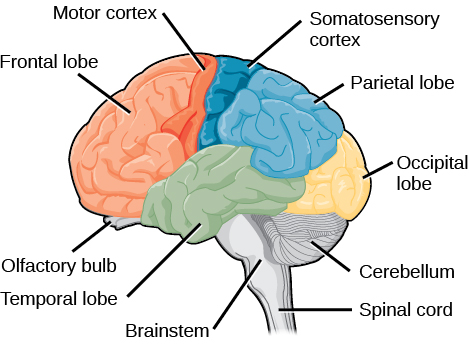
Know Your Nerve Pain
What happens when you feel pins and needles, abnormal sensations, or shooting pain? How often should it occur or should it even be occurring in the first place? When should you be worried about nerve pain?
Well, fret not! In this article, we’ll discuss the difference between nerve impingement and neurodynamic sensitivity.
Let’s start with some basic information about our Nervous System.
The Anatomy Of Our Nerves
Our nerves are divided into two categories: Central Nervous System (CNS) and Peripheral Nervous System (PNS).

Types Of Nerves
Just like our Nervous System, the nerves itself is split into two categories: Ascending/Sensory and Descending/Motor.
Ascending/Sensory Nerves
These nerves carry messages from the receptors on our skin to the spinal cord and brain so we can feel sensation, also known as, sensation nerves.
Descending/Motor Nerves
On the other hand, these nerves carry messages away from the brain or spinal cord down to the muscles so we can contract them and move our body, also known as, muscle nerves.
Symptoms Of Nerve Pain
Tingling, pins and needles and shooting pain down the arm, you may get some reduction in strength but there won’t be a significant difference between the other side of your body. All of these are similar to that for nerve impingement but, these are less severe and as Physios, we can complete assessments to detect which pathology is occurring.
How Do Physiotherapists Diagnose Your Pain
Typically, the nerves we test in Physiotherapy are peripheral nerves (PNS) as these are the ones that supply muscle power and detect sensation.
When a patient describe feeling a form of weakness in their muscles or changes in sensation, it may suspect that the peripheral nerves might be the source of the problem. This is because they are not feeding back correct sensory information to the spinal cord or brain; or are unable to supply the muscle with the power that it needs.
Peripheral nerves follow a specific pathway that correlates to a level of your spine. We, as Physiotherapists can then detect which spinal level and hence which nerve is affected.
However, if there is no pattern to your nerve symptoms, we would then look to investigate if there is a problem with the central nervous system CNS. These symptoms might be different on both sides and more spread out: there is no pattern.
We would do more specific balance, coordination and limb awareness assessments to determine this. Problems that may affect the CNS range from tumours, bleeding in the brain or other neurological conditions that affect the axons in nerves. Sometimes this can also be due to functional or chronic pain pathologies, where the body reacts to stress in various ways.
The Difference Between Nerve Impingement And Neurodynamic Sensitivity
Nerve Impingement
When there is significant pressure on the nerve to cause either a reduction or loss in sensation or muscle power.
You would have symptoms like numbness, pins and needles, shooting pain, feelings of insects crawling on the skin or water dripping down. You may feel weaker in certain parts of your body, where the pain is.
This is normally due to a prolapsed disc (slipped disc) in the spine, placing more pressure on the nerve. You would normally get back pain too. This can be solved with Physiotherapy by:
- Mobilising the disc through Manual Therapy
- Moving and strengthening the back so that the disc moves and relieves symptoms on the nerve
Evidence has shown that both conservative management and surgical treatment of prolapsed discs result in the same outcome. Surgical is more invasive, with risks, whereas physiotherapy may take slightly longer.
Neurodynamic Sensitivity
Previously, it was called neural tension because of the idea that the nerve is ‘tight’ and we would need to stretch it. Now, we’ve labeled the term as neurodynamic sensitivity. The reason being that this type of pain/pulling we feel in the nerve can be caused by:
- Muscle spasms/knots inhibiting movement of the nerve
- Lack of movement of the nerve or joints next to the nerve
- Chemical changes within the nerve itself that make it sensitive
All the above cause lack of movement of specific structures where you experience pain. Nerves like A LOT of oxygen and they receive this through movement. Being unable to move as much as they would like, the reduced levels of oxygen lead to nerve sensitivity.
Visit Your Physiotherapist!
If you’re living with pain, it may be time to have a chat with your physiotherapist. A physio can help to tailor an exercise program to your specific body needs and with the considerations of your specific lifestyle and medical background.
Written By: Kate McCormack – B.Sc. (Hons) Physiotherapy (UK)
Kate graduated from Cardiff University (UK), specialising in musculoskeletal physiotherapy with an interest in neuropathic pain in the lower back, neck, and lower limb injuries. She optimises function through facilitation of muscles, gait re-education, and retraining of the brain to regain movement and coordination. She also has an interest in women’s health, treating both pre-natal and incontinence issues.


